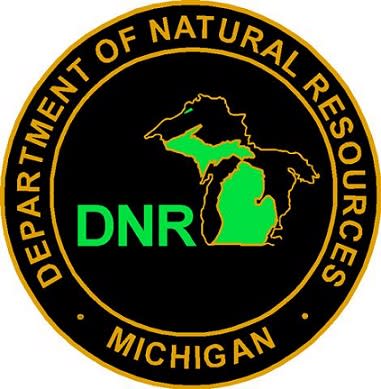Michigan DNR Detects Koi Herpes Virus in Silver Lake Fish Kill
OutdoorHub 10.27.11

A Department of Natural Resources sampling of an August 2011 common carp die-off in Oceana County’s Silver Lake has detected Koi herpesvirus (KHV). An estimated 2,000 to 4,000 adult common carp died, a small proportion of the total carp population, DNR Fisheries Division officials said.
Other fish species were found to be in healthy and unaffected.
“This virus is capable of large scale common carp die-offs as seen in Ontario in 2007 and 2008,” said Gary Whelan, DNR fish production manager. “The virus is an internationally reportable disease and has been reported to the World Animal Health Organization (OIE).”
Earlier this year, KHV was confirmed during another fish kill on Kent Lake in Oakland and Washtenaw counties. KHV had not been previously found in wild fish samples in Michigan until this year, but was detected in a private Koi pond near Grand Rapids in 2003.
KHV in Silver Lake was identified through a cooperative effort involving the DNR, Michigan State University’s Aquatic Animal Health Laboratory and the USDA- APHIS National Veterinary Services Laboratory in Ames, Iowa.
The underlying reasons for the emergence and spread of KHV in Michigan remain under investigation.
KHV affects common carp, goldfish, and Koi and is specific to those fish species. KHV is not likely to affect native minnow species and there are no human health effects.
KHV disease is found worldwide and likely was introduced to Michigan waters from the release or escape of infected ornamental fish. It is transmitted fish to fish and usually only causes disease outbreaks at temperatures above 60o F. KHV can live for short periods outside of fish in water or bottom sediments. Disease signs include bloody patches on the fish’s sides, lethargic swimming on the surface, sunken eyes, and deteriorating gills. Infected fish may survive the disease and become carriers of the pathogen for other fish.
“The disease is easy to confuse with other diseases such as Viral Hemorrhagic Septicemia so laboratory analysis is needed to confirm this disease,” Whelan said. “While there are no treatments for this disease, the DNR is evaluating the next steps to manage this pathogen.”
The public is asked to notify the DNR when they see unusual fish kills at www.michigan.gov/fisheries under “Related Resources.”
Additional information on this virus, including its virulence, global distribution and prior large-scale mortalities in North America can be found at the Ontario Ministry of Natural Resources website: http://www.mnr.gov.on.ca/stdprodconsume/groups/lr/@mnr/@letsfish/documents/document/241236.pdf , and at the University of Florida website: http://edis.ifas.ufl.edu/pdffiles/VM/VM11300.pdf.
“This disease outbreak is another example of why the DNR reminds anglers and boaters that they need to drain bilges and live wells upon leaving a boat launch,” said Acting DNR Fisheries Division Chief Jim Dexter. “Anglers should clean their boats, disinfect their gear and not move live fish to reduce the possibility of any fish diseases being transferred to new locations.”
The Michigan Department of Natural Resources is committed to the conservation, protection, management, use and enjoyment of the state’s natural and cultural resources for current and future generations. For more information about the department, go to www.michigan.gov/dnr.

